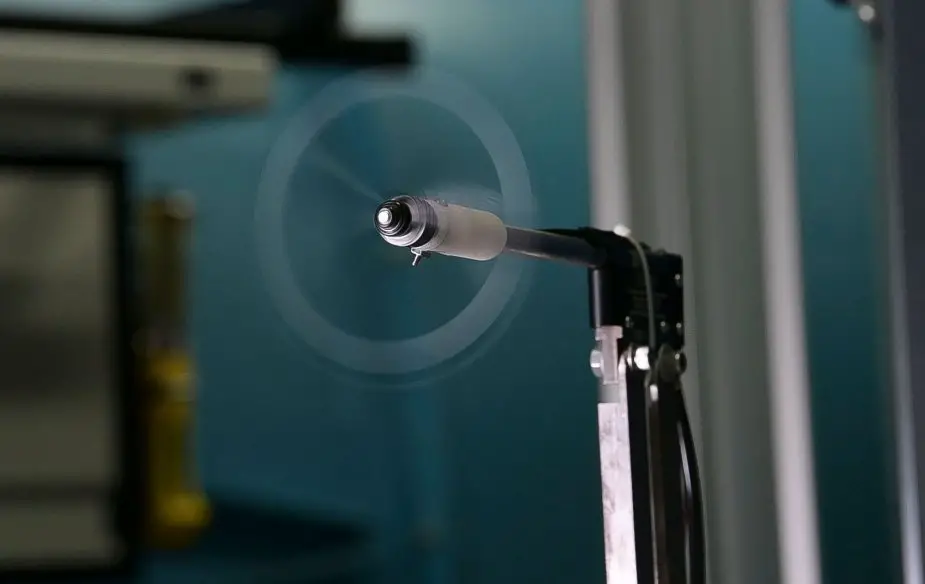Researchers from the U.S. Army Research Laboratory and Bell Helicopter, a Textron Inc., company, met in June to further advance the development of a micro unmanned aerial system or UAS. The UAS is a miniature, lightweight reconnaissance vehicle that Soldiers can carry onto the battlefield and deploy in a confined space.

A small UAS propeller tests the force balance in a wind tunnel operated by U.S. Army Research Laboratory and Bell engineers during a recent visit to the laboratory at Aberdeen Proving Ground, Maryland. (U.S. Army photo by Jhi Scott)
Bell representatives attended ARL's open campus event in November 2016. Following a year and a half of relationship building and information sharing, signed a five-year cooperative research and development agreement, or CRADA, in March 2018.
"The CRADA lets us work together," said Dr. John Hrynuk, a mechanical engineer in ARL's Vehicle Technology Directorate. "We're trying to get data on the fundamental level, to build up a knowledge base of vehicles, because their expertise is in designing the vehicles, whereas our expertise is the fundamentals of them."
Hrynuk noted this is new way of doing business between ARL and Bell.
"We want new technology; they want new vehicles," he said. "Together, we want to enhance technologies for the Soldiers -- that's what makes it the absolute perfect collaboration."
Bell engineers, Levi Hefner and Dakota Easley recently visited ARL to use its wind tunnel to perform experiments on the micro UAS.
The visit was prompted by vehicle control challenges Bell researchers had observed in early flight testing. With the help of ARL scientists and equipment, Bell engineers were able to isolate their earlier challenges and improve the performance of the aerial vehicle.
"The wind tunnel here at ARL has been beneficial in providing data that explains why certain things are happening on the control side," Hefner said. "Now we're able to better analyze our tests to enhance the performance of our vehicles.
"So far, the joint effort to improve the UAS has been largely successful, officials said. The two parties worked effectively together by taking advantage of their respective strengths to manage different aspects of the development process.
"This collaboration is great because we're heading into a new design space with these small vehicles," Hefner said. "ARL has the resources and expertise to help us out, and together we can build a better vehicle than either of us could build alone."














